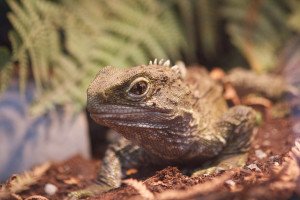New fossils from South America overturn the current thinking that the tuatara was the only species of its kind to survive a catastrophic asteroid impact millions of years ago.

Often referred to as a ‘living fossil’, New Zealand’s tuatara was believed to be the only species of its kind – called rhynchocephalians – to survive the asteroid impact that killed off the larger dinosaurs 66 million years ago.
Now, new research shows that another rhynchocephalian reptile species also survived the impact in Patagonia, South America. Unfortunately this distant cousin of the tuatara became extinct just a few million years later, but left behind fossil evidence of its survival.
Fossils from the newly described Kawasphenodon peligrensis, found in Punta Peligro, Argentina, show that the species survived at lest several million years beyond what is termed the K/Pg extinction event – generally understood to be a massive impact from an asteroid. The authors suggest that K. peligrensis became extinct during a global cooling event several million years later.
The authors note that the discovery gives weight to the theory the impact of the K/Pg extinction event was less severe in the Southern Hemisphere. The research is published this week in Proceedings of the Royal Society B: Biological Sciences.
Examples of media coverage include:
3 News: Tuatara’s cousin also survived asteroid
New Zealand Herald: Tuatara’s cousin survived asteroid impact that killed dinosaurs